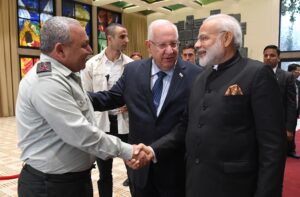Indian Politics: A Tapestry of History – Indian politics, with its rich tapestry of history, dynamic leaders, and complex challenges, stands as a pivotal force on the global stage. In this article, we’ll embark on a journey through the evolution of Indian politics, the key figures shaping its destiny, the role of political parties, electoral intricacies, and the challenges and reforms that define this vibrant landscape.
Introduction to Indian Politics
In the heart of South Asia, Indian politics serves as the pulsating core of the nation. Its influence extends far beyond borders, making it a topic of global interest. The roots of Indian politics run deep, reaching back to ancient civilizations and evolving through the ages.
Historical Evolution of Indian Politics
The pre-independence era laid the groundwork for the political ethos that would shape the nation. The post-independence period witnessed the birth of the world’s largest democracy, marked by ideological struggles, visionary leaders, and the drafting of the Constitution.
Key Figures in Indian Politics
Mahatma Gandhi’s non-violent resistance, Jawaharlal Nehru’s vision for a modern India, and the enigmatic leadership of Indira Gandhi form the cornerstones of Indian political history. Understanding their contributions is essential to comprehending the essence of Indian politics.
Political Parties in India
A diverse political landscape unfolds with parties like the Bharatiya Janata Party (BJP), the Indian National Congress (INC), and numerous regional players. Each contributes to the vibrant democratic mosaic that characterizes Indian elections.
Electoral System in India
India’s electoral system, one of the largest in the world, plays a pivotal role in shaping the nation’s leadership. The democratic process not only reflects the will of the people but also presents a unique set of challenges.
Challenges in Indian Politics
Corruption, communalism, and economic disparities pose formidable challenges. Navigating these issues requires strategic policymaking and public participation to ensure a robust and inclusive political system.
Role of Social Media in Politics
The advent of social media has transformed political communication, influencing election outcomes and shaping public opinion. However, it brings along challenges related to misinformation and privacy.
Women in Indian Politics
While progress has been made, gender disparities persist in Indian politics. Exploring the journey of women in politics unveils both achievements and ongoing struggles.
Political Reforms in India
Efforts towards transparency and electoral reforms aim to strengthen the democratic foundation. Analyzing these initiatives provides insight into the ongoing evolution of Indian politics.
Foreign Relations and Indian Politics
Diplomacy and political ties have a profound impact on India’s global positioning. Understanding the interplay between foreign relations and domestic politics is crucial for a comprehensive perspective.
Emerging Leaders in Indian Politics
A new generation of politicians is making waves, bringing fresh perspectives and dynamism to the political arena. Examining their roles sheds light on the changing face of Indian politics.
Political Movements and Protests
From historical movements for independence to contemporary protests, India’s political landscape has been shaped by the collective voice of its citizens. These movements reflect the ongoing struggle for justice, equality, and social change.
Regional Disparities in Political Representation
Examining regional variations in political representation reveals nuanced dynamics, with North vs. South and Urban vs. Rural disparities influencing policy decisions.
The Future of Indian Politics
As we gaze into the future, emerging trends indicate a shift in political paradigms. Global connectivity, technological advancements, and changing demographics will play pivotal roles in shaping the trajectory of Indian politics.
Conclusion
In conclusion, Indian politics is a vibrant tapestry woven with historical threads, contemporary challenges, and the promise of change. Engaging with the political process becomes not just a right but a responsibility in steering the nation towards a brighter future.
Frequently Asked Questions (FAQs)
- How diverse is the Indian political landscape?
- The Indian political landscape is incredibly diverse, featuring a multitude of parties with varying ideologies, representing different regions and communities.
- What role does social media play in shaping political opinions in India?
- Social media has become a powerful tool, influencing public opinion, mobilizing support, and even impacting election outcomes. However, it also poses challenges related to misinformation.
- How has the role of women in Indian politics evolved over the years?
- While progress has been made, gender disparities persist. Women in Indian politics have made significant strides, but there is still work to be done for equal representation.
- What are the key challenges facing Indian politics today?
- Corruption, communalism, and economic disparities remain significant challenges. Tackling these issues requires concerted efforts from both policymakers and the public.
- How can the youth contribute to the future of Indian politics?
- The youth can contribute by actively participating in the democratic process, staying informed, and advocating for positive change. Their engagement is crucial for shaping the future political landscape.



